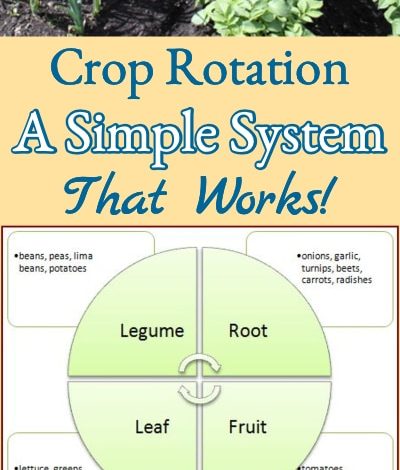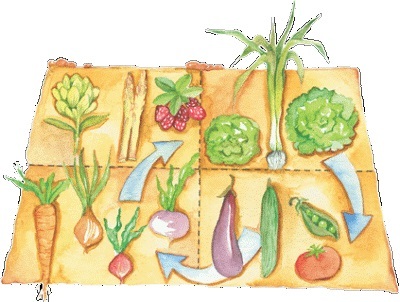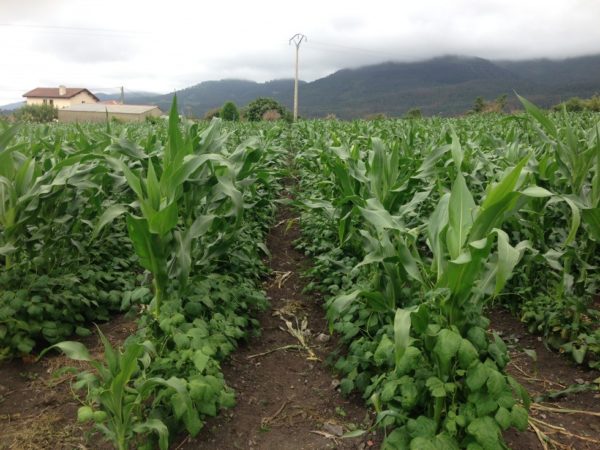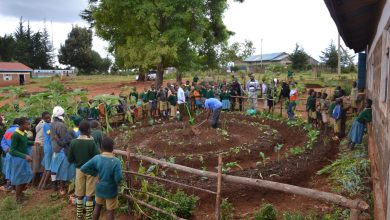Crop Rotation in the Organic Garden: Complete Guide

Good Agrohuerters ! How is the week going? I imagine that you will be experiencing the changes of season and the work in the garden will begin to change. In addition to continuing with the winter garden, planting lettuce, cabbage or garlic, I imagine that you will also be taking stock of your summer harvest.
See if the tomatoes have turned out well, continue planting next year, see that the carrots have not sprouted very well and perhaps change their place…these are things that you may be considering. These types of ideas and questions are part of planning and specifically crop rotation in the garden, it is something that we see that interests you and that from Agrohuerto.com we like to discuss with you in order to learn more.

Well, I won’t keep you any longer, and we’re going to talk a little more about crop rotation
Story about crop rotation
I like to situate these ideas that we currently have with history, which is why I situate you a bit. We have to think first about why we have to do a crop rotation. High above, it is done mainly so that the soil recovers nutrients, mainly nitrogen (N), which is what makes the plant grow; It can also help us to avoid pests and diseases that can appear if we make a continuous culture of a species.
Of these ideas, there are references to Asian civilizations and here in Europe in Roman literature, we are talking about more than thousands of years.
Advancing a little further in Europe, in the 8th century, during the reign of Charlemagne, a new novelty was introduced in the use of rotation that consisted of making a transition of three fields, that is; a plot is divided into three sectors, in one sector the winter crops were planted, in another the summer crops were cultivated and the other fallow, and then it was rotated, the winter one would become summer, the summer one fallow and finally from fallow to winter.
This was a revolution since the company had just used a two-field system, and it allowed for further optimization of production results and a greater list of foods during the year.

Later, from the Middle Ages to almost today; this evolved in the field over the years, that is; farmers began to cultivate rainfed tracts and plant wheat, then barley, then fallow. In this way, the productive soil was improved or restored.
What happened in the 20th century?
Despite the fact that crop rotation is very old, in the 20th century, with the appearance of chemicals, everything that crop rotation entailed was forgotten, since it was easier for the farmer to buy a pesticide and eradicate a pest. The consumer did not see negative effects and everyone was happy. However, at the end of this century, it was reused with the implantation of biological and ecological crops, giving reasons for possible negative effects both on the environment and on the consumer due to the effect of inappropriate chemicals.
Rotation and association of crops
After knowing this, we must think that after planting a certain plant in a space, this plant will take advantage of the soil in its own way and through the exchange that it will carry out through its roots it will absorb some nutrients that another plant may not need or vice versa, and it will also provide other elements that accumulate in the soil.
In addition, we must consider that each plant has a different root and, for example, if I plant alfalfa and then want to plant potatoes, it may be advisable to plant two years of barley in between, so that rooting does not affect potato production.. It is an example perhaps brought from a much larger land than your orchard, but I hope you understand me and if you have any questions, comment on the forum.

I also want you to be clear that the concepts of rotation and association go hand in hand. Knowing a little that with crop rotation we make sure that each season we have new crops in different spaces of our land, the association of crops is a term that refers to the good or bad relationship that exists between plants. As I told you in the header of the article, I refer you to the article that Lucía wrote about ASSOCIATION OF CROPS IN THE GARDEN: COMPATIBILITY BETWEEN PLANTS where you will see the different compatibilities.
Advantages of intercropping
As I have quoted above, crop rotation gives us:
- Prevents the soil from becoming impoverished
- Plagues do not last over time
- Less use of fertilizers
We also have disadvantages such as the rotation pattern that is very strict and that there are crops such as raspberries, asparagus or some perennials that do not enter the rotation cycle. Despite this, I recommend that you read the articles that I have mentioned and for any questions you may have, you can write a comment at the end of this article. We are here to answer your questions.
It is not the first time that we have dealt with this topic on the web, as you can see in articles such as PLANNING THE GARDEN and PLANNING THE GARDEN: CROP ROTATION; and similar topics for the design and association between plants such as ASSOCIATION OF CROPS IN THE GARDEN: COMPATIBILITY BETWEEN PLANTS.
A big greeting and full in the orchard!


![Photo of How to Germinate Orange Seeds: [Time, Actions, Place and Steps]](https://www.complete-gardening.com/wp-content/uploads/2022/08/how-to-germinate-orange-seeds-time-actions-place-and-steps-390x220.jpg)

![Photo of Calceolaria: [Cultivation, Irrigation, Care, Pests and Diseases]](https://www.complete-gardening.com/wp-content/uploads/2021/06/Calceolaria-390x220.jpg)